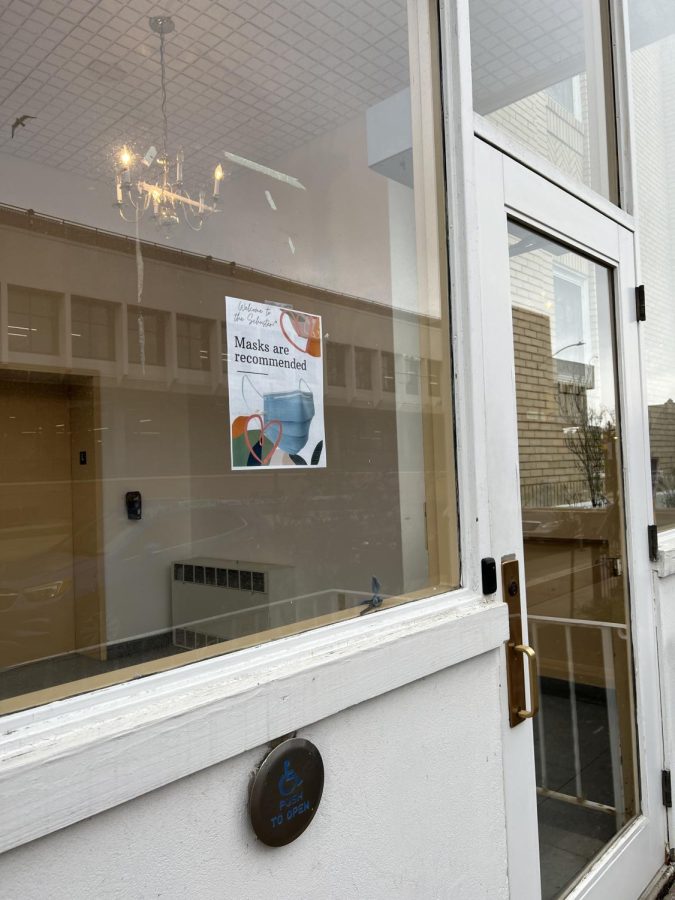Students adjust to changing COVID-19 conditions
April 27, 2022
Since March 2020, the COVID-19 pandemic has dictated the livelihood of people around the world. Mask mandates, social distancing protocols, virtual school and work, and breakless semesters have all characterized the last two years.
Now, as COVID-19 protocols are being lifted and life is resuming a sense of normalcy, the question remains – will COVID-19 become severe enough again to have a significant impact on society?
Gannon University lifted its mask mandate in mid-March, right before spring break. This was the last COVID-19 mitigation on campus, as social distancing protocols, hyflex, hybrid and fully remote classes, and capacity limits were lifted at the beginning of the fall 2021 semester.
As the spring 2022 semester winds down and students, faculty and staff look toward the future, life at Gannon continues as the pandemic develops.
The current seniors are the only students who had a fully “normal” year of college. Most other students’ experiences have been dictated in some way by the COVID-19 pandemic, whether that was the shutdown in March 2020 or wearing masks everywhere on campus for a significant part of their college years.
Sofi Folk, a sophomore occupational therapy student, said that for the first year and a half of her college experience, students were very limited in social interactions.
“For example, we had to social distance everywhere and wear masks at all times,” she said. “Some of my classes were hybrid, so they were online one day of the week and in person the other day.
“It was challenging adjusting to a new place and having so many restrictions.”
The COVID-19 pandemic impacted students, faculty and staff at Gannon in a variety of ways. The uncertainty that surrounded how the pandemic would develop and what would be done to mitigate its effects caused mental and emotional distress for many. However, it also furthered a sense of community at Gannon, said Austin Hertel, a senior biology and public health major.
“Early on, there was quite a bit of uncertainty and anxiety with regards to coming back to school after the abrupt end in March 2020,” he said. “However, I believe the Gannon community shined in its ability to demonstrate social responsibility, extreme perseverance and an unwavering unity as we all endured the pandemic together.”
While the 2019-2020 and 2020-2021 school years were limited in social interaction, events and “normal” daily experiences, the 2021-2022 school year started off with a better sense of normalcy, which many took as a good sign of things to come and attributed to the Gannon community’s ability to do the right thing.
Doug Oathout, chief of staff and the university’s director of Marketing and Communications, said COVID-19 continued to disrupt operations in 2021-22 but not nearly to the degree of the previous academic year.
“I would attribute the lower effect to our high rate of vaccinations and to our students, staff and faculty taking their personal health seriously,” Oathout said. “They wore masks, maintained distance where appropriate, and I saw many keeping to smaller social groups, which limited exposure.”
One big moment in the 2021-2022 school year was the lifting of mask mandates, Folk said. This was a mark of hope for students, faculty and staff, as social interactions could be more normalized.
“I was extremely excited when the mask mandate was lifted,” she said. “It felt very freeing and like we were getting back to a normal way of life again. It was very encouraging.”
Although COVID-19 mitigations have been lifted, the 2021-2022 school year saw more positive cases than the previous school year, Oathout said.
“We had more positive cases, but far fewer people needed to be quarantined,” he said. “As a result, there were far fewer classroom and housing disruptions. Also, people were generally not as ill if they did get COVID-19.”
Still, despite the headway that has been made in terms of COVID-19 mitigations being lifted, the COVID-19 pandemic is far from over and will continue to influence the Gannon community past the 2021-2022 academic year, Oathout said.
“COVID-19 will not go away anytime soon,” he said. “We are preparing for this disease’s endemic phase. We expect it to affect us for some time.”
For students, the pandemic is also far from over, as it will continue for the foreseeable future.
“COVID-19 will become an endemic disease that health systems will be able to manage,” Hertel said. “However, as the levels of disease become low enough that it is not a significant disruption to society, we will begin to see the remnants of ‘normalcy’ in our community.”
As for the 2022-2023 school year, a sense of normalcy is expected to continue to increase as the health system’s ability to handle the virus will also increase.
“We expect to still need to have testing available and to be able to initiate mitigation efforts to curtail small outbreaks,” Oathout said. “I do not see a need for mask mandates or vaccine mandates at this point.”
Overall, students, faculty and staff put in a valiant effort over the last two and a half academic years, Oathout said, and that will continue to pay off.
“I am hopeful the worst is behind us,” Oathout said. “I am hopeful that we have learned to live with the threat of COVID-19 in a healthy way. I am inspired by how this university came together to collectively accompany each other through this pandemic.
“We could have lost our way from fear and emotion, but we didn’t. In fact, I think we came closer together to achieve two years of face-to-face education when so many other institutions could not. I found that inspiring.”





